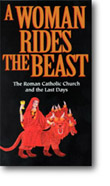One must know that it is a Mortal sin
BEFORE committing it,
: Why Confession if Communion takes away sins?
Quote:
| =Zundra -I've never been to confession (yet), can you please tell me what heppens? I might add that of course I am coming from a methodist church, so, formerly we don't believe that a "Priest" can forgive your sins...... |
Lets began with your last statement first.
From your background we know that you believe in the bible, so that is where we will start.
First of all, in a fully correct and in a technical sense it is God, not the priest who forgives sins. The role of the priest is to 1. Hear your Confession, determine if you are sincerely repentant and then grant Absolution. [Which I shall explain shortly.]
1. Son: 1 Jn. 1: "If we say we have no sin, we deceive ourselves, and the truth is not in us. 9 If we confess our sins, he is faithful and just, and will forgive our sins and cleanse us from all unrighteousness. 10 If we say we have not sinned, we make him a liar, and his word is not in us."
All of us are sinners to varying degrees depending on the amount of grace offered, accepted and properly applied by each of us.
2 1 Jn.5:16 "If any one sees his brother committing what is not a mortal sin, he will ask, and God * will give him life for those whose sin is not mortal. There is sin which is mortal; I do not say that one is to pray for that. 17 All wrongdoing is sin, but there is sin which is not mortal." [Thus there is sin that is Mortal!]
Here we are introduced to the very logical concept of "two levels of sin." Less serious that we term "Venial" sins, and VERY serious sins that we call "Mortal" sins. Whilw all sins hurt our relationship with God, hurt ourselves and the community, "Mortal " sin as the name implies are so serious as to completely sever ones relationship with Christ. One remains seperated from God until one Confesses, Repents, receives Absolution and completes the Pennance given. [I'll explain this also shortly.]
3 Jn.20:21-13 "Jesus said to them again, "Peace be with you. As the Father has sent me, even so I send you." 22* And when he had said this, he breathed on them, and said to them, "Receive the Holy Spirit. 23* If you forgive the sins of any, they are forgiven; if you retain the sins of any, they are retained"
Add to the Mt. 16:19 [Jesus speaking to Peter,who represents the Church, popes, bishops and priest] " 19 I will give you [singular for His Church] the keys of the kingdom of heaven, and whatever you bind on earth shall be bound in heaven, and whatever you loose on earth shall be loosed in heaven." [Singular for His Popes, Bishops and priest.]
So clearly there is clear and binding authority for the Sacrament of Confession.
The steps for Confession are:
1 A full and complete personal examination of Conscience, trying to recall all of the sins committed. NOTE: ONLY all of f the Mortal sins need to be confessed, giving the description of each and number of times committed. NOTE: Under the penalty of both spiritual and physical death Confessors are sworn to a vow of complete Secrecy. Under NO CIRCUMSTANCES, can a confessor share, discuss, reveal anything heard in the Confessional. PERIOD! Whaqt you confess remains between you and God.
2 The role of the Priest[Confessor] is to hear your Confession, determine if you are really and truly repentant, give some advice on how you might "avoid the near temptation of sin in the furture," Grant Absolution, [with the words of Absolution: "I absolve you from your sins in the name of the Father, the Son and the Holy Spirit [to which you reply "Amen"] which means "I believe." "Go now YOUR SINS ARE FORGIVEN IN THE NAME OF THE LORD!" No guessing, 100% certainty that Christ has forgiven you! WOW!
NOTE, that is the Holy Spirit, not the priest who Forgives you your sins! The Confessor is acting in, through and on behalf of Jesus. Thus the words "I ABSOLVE" not "I forgive" are used.
The Confessor will assign some sort of "Penance" [evidence and offering back to God as a sign of your sorrow and gratitude.] This Penance MUST BE completed before the effects of absolution take effect.
The format is either "always" * "person to Confessor" either behind a veil or at your option "face to face." One should be mindful that it is common to be uncomfortable, and that is part of God's intent. The fact that we MUST!!!!!! Confess our sins, hopefully will be a deterrent to furture sins. Having said this it is important that one Confess all Mortal sins and the number of times committed. The Confessor may ask a few questions in order to determine the degree of "cupability." which effects the seriousness of the sins.
In order for a sin to be "Mortal" in must be 1. Serious matter 2.
One must know that it is a Mortal sin BEFORE committing it, and 3. Still desire to commit the sin anyway.
Some examples of Mortal sins are sex outside marriage, use of Contraceptive sex, abortion, ruining the reputation of another, excessive greed and many other things. [Really a seperate topic].
The format is enter the Confessinal, "make the sign of the cross" "Bless me Father for I have sinned, it has been [time period...my first Confession, two weeks ect.] since my last Confession. I have sinnes in the following ways. [full and complete disclosure]. Fatehr may ask clarifying questions? Reply honestly. The Absolution is granted, "pennace" is given, Father will bless you and tell you to "Go in PEACE!"
A final NOTE: Mortal sins are so serious that unconfessed they will send one to Hell for eternity.
One may not receive Catholic Holy Communion unless they are "in the state of grace" [w/o
Mortal sin on ones soul. 1 Cor. 11:27-29.





